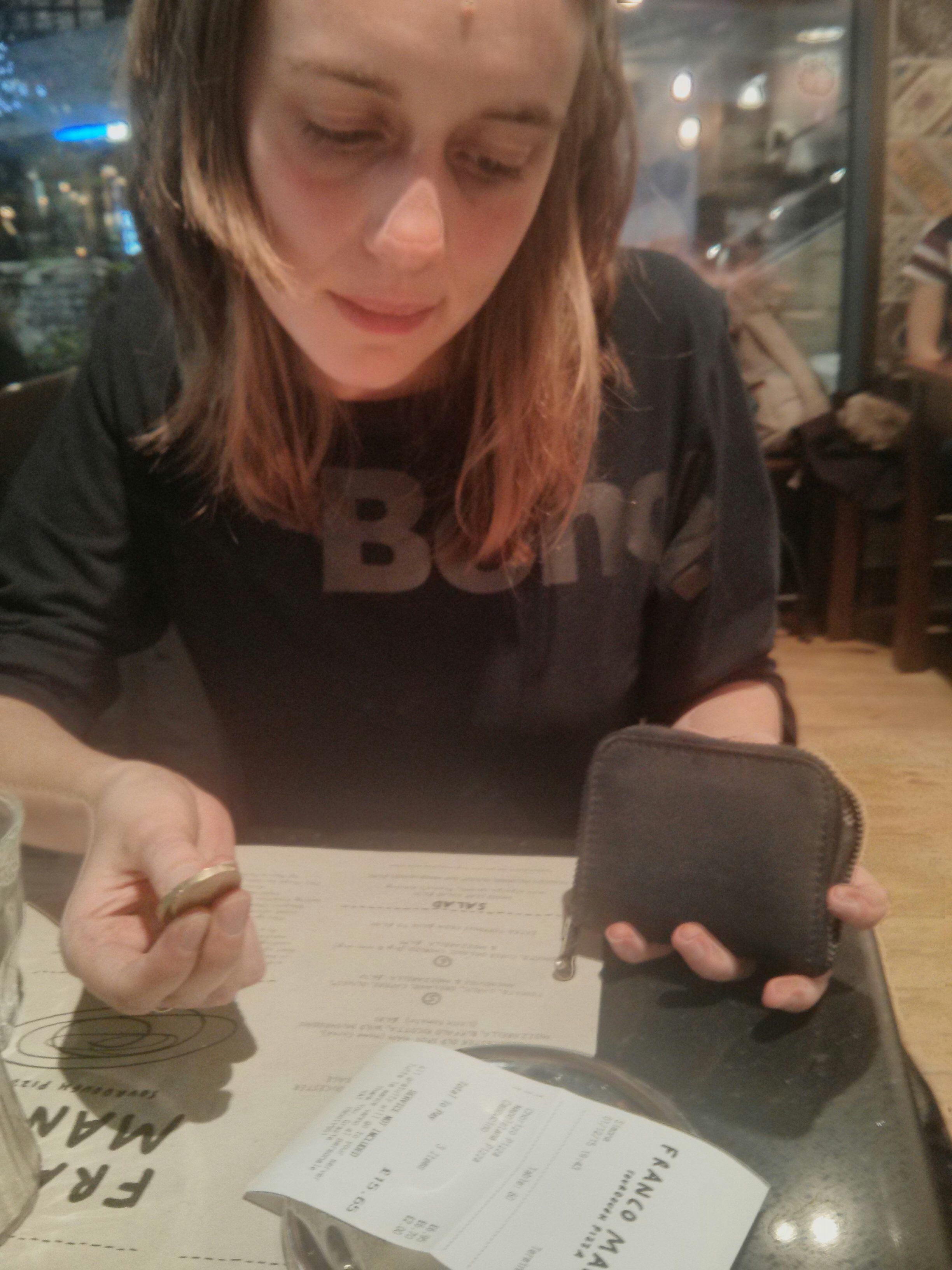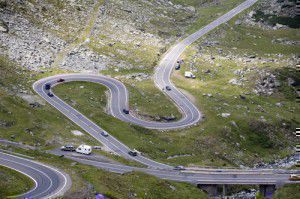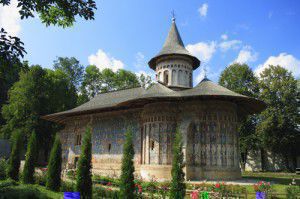To tip or not to tip?
A social dilemma you’re bound to fall into at some point is whether or not to tip – and how much! Tip too little and you risk the waiter chasing you down the street shouting abuse; tip too much and you might gravely offend the staff. Tipping customs vary all over the world, between different countries and regions (not to mention situations), so do your research before you travel!
How much should you tip?
In the USA, tipping is mandatory and fairly high, with 15-20% being expected. Service wages are fairly low, meaning people factor tips into their pay, and waiters will ask you where their tip is if you haven’t left one.
In the UK, tipping is more relaxed and is never really expected in a pub or cafe, or anywhere with self-service. In restaurants, 10% is usually expected, but if you feel the service was poor then you can express this by not leaving a tip.
Move into Romania, however, where 10% is also recommended (more if you’re really happy with the service), and not leaving a tip would be considered very rude: do not try to return to a restaurant where you didn’t leave a tip.
Drinking tips
In lots of countries in Europe, the traditional attitude towards tipping can be seen in the language: German ‘Trinkgeld’, Swedish ‘dricks’ and Danish ‘drikkepenge’ all mean ‘money for drinking’, as does the Slovak ‘prepitné’, French ‘pourboire’, Slovenian ‘napitnina’, Serbian ‘напојница’ and Croatian ‘napojnica’. The idea behind this is that you just round the bill up or leave a few coins, as a contribution towards a drink for the waiter.
Further East, the direct translation is even more specific: in Russia, you leave money ‘for tea’ (‘чаевые’). The same is true of Kazakh‘s ‘шайлық’ (шай- shai- tea’), Uzbek‘s ‘чойчақа’ and Tajiki‘s ‘чойпулӣ’).
Beware, however, that tipping practices have changed significantly and just a few coins often won’t cut it any more in these countries: be prepared for at least a 10% tip, as a broad guideline.
When not to tip
So far, the problem has only been how much to tip, and if you’ve accidentally tipped too much in America or Europe, it won’t cause any massive problems. But in some areas the attitude towards tipping changes drastically.
In Malaysia, Singapore and Japan tipping is not practised at all and could be considered odd or even offensive.
In Georgia, it can be seen as an affront to the notion of hospitality. Beware as well that a tip can easily be misconstrued as a bribe, which you definitely don’t want to get in trouble for, so make sure you look up before travelling whether tipping is normal practice in the country you’re visiting!
Have you ever been caught out by tipping etiquette?
Nat
10 reasons to visit… Romania
As you know, we love travelling and learning about all kinds of cultures around the world, so we decided to start the ’10 reasons’ series – every now and then we’re going to give you 10 reasons for which you should consider visiting a new country.
This month I chose Romania because it is my home country and because I can think of a lot more than ten reasons to visit this beautiful country. So, enjoy your read and please note that the reasons are not stated in any particular order – all are equally important.
1. Breathtaking mountain landscapes
Romania is one of the ‘lucky’ countries which gets to enjoy both mountains and sea, but the truly amazing landscapes are definitely to be seen in the Carpathian mountains. There are two main roads that traverse the mountain chain and they are Transalpina and Transfagarasan. These roads reach the altitude of 2042 metres (6700 ft) and take you through endless curves and sheer drops – make sure you pull over to take photos.
2. Transylvania
This might be the best known area in Romania, mainly because of the Dracula myth that is supposed to have taken place here. I’m not going to tell you about how you can have vampire encounters (Dracula is as real as Edward Cullen so don’t get your hopes up), instead I’m going to tell you that this is a very special part of Romania, having many colourful medieval cities with beautiful architecture as well as friendly people and delicious food – but more about this in the following points.
3. Black Sea resorts and summer fun
My hometown is on the Black Sea shore and I can promise you, it is like Ibiza down there. There are parties almost every day of the week during the summer but the weekend is when it gets really loud and fun. Most Romanians go there for a couple of weekends during the summer for festivals and other party-related events. You can even go on your own, you will make a lot of friends. During the day, you can lay on the beach and get a nice tan to show off when you go back.
4. Finger-licking food
If you decide to take a trip to Romania, make sure you are ready to come back home with 5-10 pounds extra, as the food over there is delicious – from the national food cabbage rolls (or stuffed cabbage) with porridge made out of yellow maize flour, to any kind of pies and cocoa sponge cake to Turkish influenced cuisine, everything you will eat there will taste amazing! On top of that, most Romanian women are really good cooks.
5. Ski- and winter-resorts
Now, I’m not much of a skier but I can tell you that you can have a great time skiing or snowboarding in the winter in the Romanian mountain resorts. The best known area for this is Prahova Valley, which is basically a river making its way thorough the chain of mountains and there are about 7-8 small resorts where you can get your share of winter fun, winter landscapes and mulled wine (what, did you think there’s no alcohol involved?).
6. The Danube Delta
If you’re more the nature-loving/sleeping-in-a-tent-is-fun kind of person you might want to take a trip here. This place is a naturally formed delta, where the Danube flows into the Black Sea. It is known for its wild places because it is pretty difficult to live there all year round given all the water and muddy islands. There are some men-built resorts where you can stay if you don’t enjoy the wilderness that much but the true sense of this place is that you can have that bonding-with-nature kind of experience.
7. The beautiful girls
Don’t get me wrong, this is not a ‘place’ you can visit, they don’t have them all lined up behind a window (although, you can find that in Amsterdam – so I’ve heard). It’s just that Romanian women are known to be beautiful and that is mostly because they take much interest in their appearance and they enjoy going out in cafés, pubs or clubs – so that makes them something you might want to experience seeing in Romania.
8. Bucharest nightlife
Speaking of clubs, this brings me to the capital of Romania – Bucharest. This big city has a vivid nightlife and fancy, luxurious clubs with music that plays till the sunrise. The custom is that you go to a club where you party & drink til 5-6 a.m. and then you go and have some Turkish kebab or shaworma (a kind of wrap) as a hangover cure. The place where you can find most of the clubs is the Old City Centre, which is very beautiful to visit during the day as well.
9. Northern Moldavia
If you are more the museum-visiting type, this area is one that you would enjoy. There are a lot of old monasteries (some date from the 14th-16th century) where nuns and monks still live nowadays and that are part of the UNESCO world heritage because they are represent the Romanian tradition. They are usually surrounded with vegetation so that can be a place to find peace and serenity even if you are not religious. Be careful of the dress code – you have to wear trousers (or a long skirt) and something rather decent for the top part.
10. The people
I’ve saved the best for last. One important reason you should visit Romania is to find that the people there are welcoming and warm, that you can make long lasting friendships very quickly and that even though Romania is a country that has had many struggles in the past, people are still good at heart and they will welcome you in their house as a friend, not a tourist.
And of course before you go, don’t forget to learn some Romanian, and take uTalk with you in case you get stuck while you’re there…
If you have any suggestions for our next ’10 reasons to visit…’ post, please let us know!
Ioana





